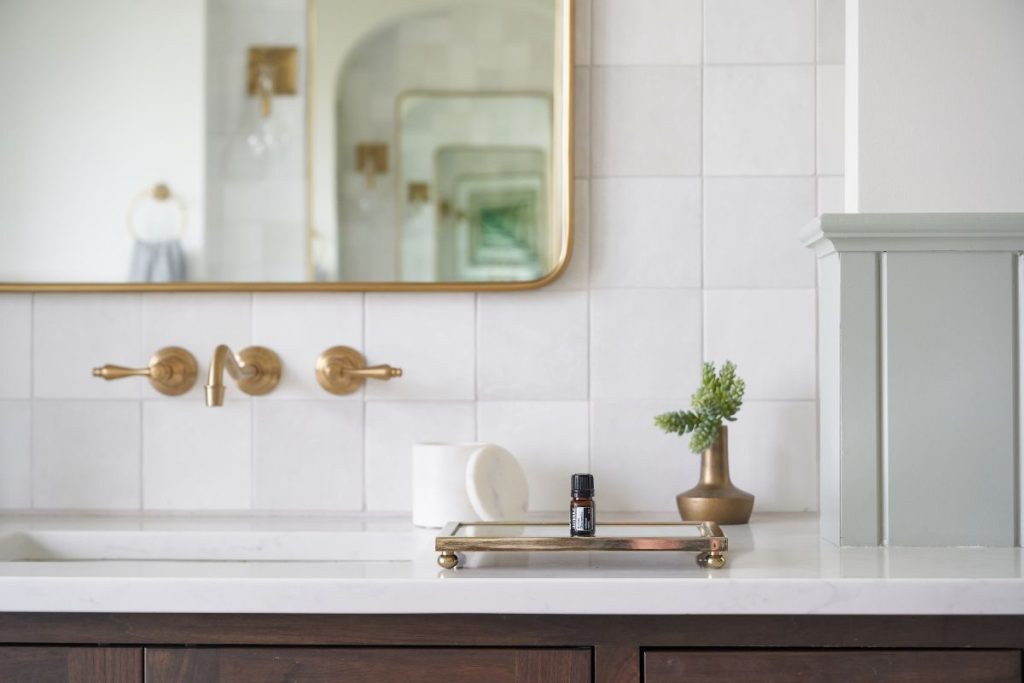We understand the importance of creating a safe and inviting living space. In this article, we’ll share actionable insights to help you create a dementia-friendly environment at home and transform your home into a place where individuals with dementia can thrive.
Environment Matters
For people with Alzheimer’s and dementia, everyday life can be both challenging and frustrating. As the symptoms progress, they will struggle with remembering, processing, thinking, and reasoning. Some simple changes to the home environment can help them stay independent and reduce stress and anxiety.
Use Contrasting Colors, Without Patterns
Contrasting colors can make it easier to see and identify important objects—for example, gold keys on a black mat. However, a lot of patterns can confuse the visual field, so keep them at a minimum.
Decrease Clutter
You know we’re big fans of decluttering here! Clutter in the home of someone with dementia can make finding what they’re looking for more complex. Keep surfaces and drawers tidy and organized to reduce frustration with this.

Add Orienting Items
Knowing where they are in terms of day and time can help someone with dementia feel calmer. It also supports cognitive function. In the room where they spend the most time, add a calendar or large numeral clock to help them stay aware.
Add Positive Memories
One of the symptoms of dementia is that short-term memory fails before long-term memory does. Adding photos or keepsakes that evoke positive memories of events they can recall creates a calming environment.
Leave Inner Doors Open
It’s common for someone with dementia to feel confused about where certain rooms in their house are located. To assist with these, leave doors open. Or, if they need to be closed for some reason, such as climate control, put up simple one-word signs to help orient them—for example, KITCHEN or TOILET with an arrow pointing to the toilet seat. If there are rooms, they should not go in, leave those doors closed and draw attention away from them.

Creating a Dementia-Friendly Bathroom
Bathrooms have many shiny objects and surfaces, making them confusing for someone with dementia. Try these tips to make each of the bathroom tasks a bit easier.
1. Contrasting Toilet Seat
White on white is traditional, but for someone with dementia and possible vision issues, it can be tough to tell exactly where they’re supposed to sit. Try using a black seat on a white toilet for easier use.
2. Raised Toilet Seat
Older adults often have mobility issues, along with dementia. A raised toilet seat makes it easier for them to sit and raise themselves without help.
3. Toilet Target Aids
Specifically, for older men with vision loss, toilet target aids are designed to help minimize misses. There are several on the market for purchase, but you could also try adding bright cereal, goldfish crackers, or other flushable items to the bowl.
4. Label Faucets
Knowing which knob to turn for hot or cold water is instinctive for you and me. For people with dementia, however, it becomes confusing. Use large labels to indicate which one is which. This is both a safety measure and one that helps reduce stress.

Creating a Dementia-Friendly Kitchen
Kitchens can be another confusing area of the home for people with dementia. Try these tips to make it less stressful and safer.
1. Make Things Easier to Find
People with dementia have a hard time remembering where things are kept. They’ll often open multiple cabinets looking for something. To help make things easier to find, keep the counters clear of clutter and use large pictures or glass cabinet doors to help them locate stored items.
2. Hide Items They Don’t Need
Obsession is a common symptom of dementia. People living with it frequently become fixated on one item or idea. Telling them not to worry about it or that it’s solved doesn’t help. Instead, hide the particular item, especially if it’s a safety issue. The old “out of sight, out of mind” adage works well here.
3. Adapt Commonly Used Items
Age and other health conditions can make gripping more difficult. There are a variety of adaptive utensils and dishware available today. You can also use foam tubing to expand the grips on utensils you already own.
4. Make Mealtime More Pleasurable
Eating often becomes more challenging for people with dementia. You can help by creating a distraction-free environment, cooking their favorite foods, and using plain colored plates that show off the food more easily.
Which of these tips was most helpful to you? Let us know in the comments below!









